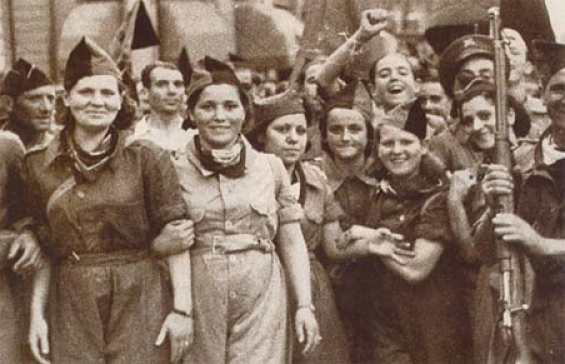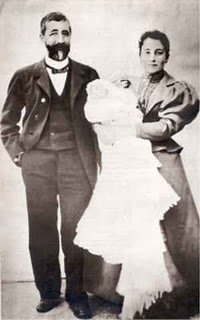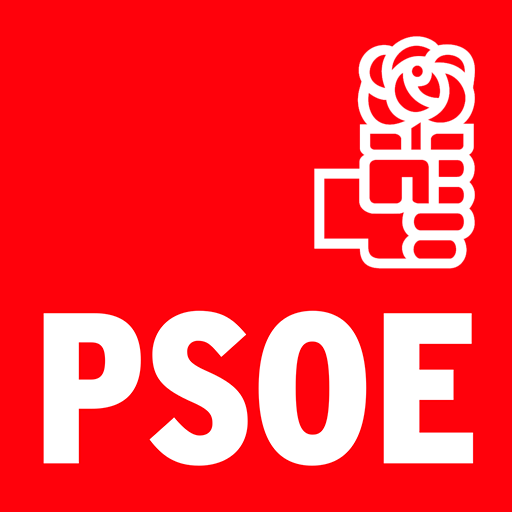|
Spanish Revolution Of 1936
The Spanish Revolution was a social revolution that began at the outbreak of the Spanish Civil War in 1936, following the Spanish coup of July 1936, attempted coup to overthrow the Second Spanish Republic and arming of the worker movements and formation of militias to fight the Nationalist faction (Spanish Civil War), Nationalists. It featured takeover of power at local levels by the Spanish workers' organizations and social movements, seizure and reorganization of economic facilities directed by trade union groups and local committees, and widespread implementation of Socialism, socialist, more narrowly, Libertarian socialism, libertarian socialist and anarchism in Spain, anarchist organizational principles throughout various portions of the Republican zone, primarily Revolutionary Catalonia, Catalonia, Anarchist Aragon, Aragon, Andalusia, and parts of the Valencian Community. Much of the economy of Spain was put under worker control; in anarchist strongholds like Catalonia, ... [...More Info...] [...Related Items...] OR: [Wikipedia] [Google] [Baidu] |
Spanish Civil War
The Spanish Civil War () was a military conflict fought from 1936 to 1939 between the Republican faction (Spanish Civil War), Republicans and the Nationalist faction (Spanish Civil War), Nationalists. Republicans were loyal to the Left-wing politics, left-leaning Popular Front (Spain), Popular Front government of the Second Spanish Republic. The opposing Nationalists were an alliance of Falangism, Falangists, monarchists, conservatives, and Traditionalism (Spain), traditionalists led by a National Defense Junta, military junta among whom General Francisco Franco quickly achieved a preponderant role. Due to the international Interwar period#Great Depression, political climate at the time, the war was variously viewed as class struggle, a War of religion, religious struggle, or a struggle between dictatorship and Republicanism, republican democracy, between revolution and counterrevolution, or between fascism and communism. The Nationalists won the war, which ended in early 1939, ... [...More Info...] [...Related Items...] OR: [Wikipedia] [Google] [Baidu] |
Economy Of Spain
The economy of Spain is a highly developed social market economy. It is the world's 12th largest by nominal GDP and the sixth-largest in Europe (fifth excluding Russia). Spain is a member of the European Union and the eurozone, as well as the Organization for Economic Co-operation and Development and the World Trade Organization. In 2023, Spain was the 18th-largest exporter in the world. Meanwhile, in 2022, Spain was the 15th-largest importer in the world. Spain is listed 27th in the United Nations Human Development Index and 29th in GDP per capita by the International Monetary Fund. Some main areas of economic activity are the automotive industry, medical technology, chemicals, shipbuilding, tourism and the textile industry. Among OECD members, Spain has a highly efficient and strong social security system, which comprises roughly 23% of GDP. During the Great Recession, Spain's economy was also in a recession. Compared to the EU and US averages, the Spanish economy e ... [...More Info...] [...Related Items...] OR: [Wikipedia] [Google] [Baidu] |
Milicianas CNT-FAI
Milicianas fought in the Spanish Civil War. They came from a culture with iconic fighters, and where women had been recently empowered through direct political engagement in political organizations and labor unions. The Dictatorship of Primo de Rivera saw women take more to the streets to protest and riot, though their actions were dismissed by male political leaders. The creation of the Second Spanish Republic led to an environment encouraging active political participation in broader Spanish society, and ultimately served to assist many women in their decision to head to the front, as the Government expanded rights for women, including the right to vote, divorce, go to school and stand for election. The Asturian miners' strike of 1934, three years into the Republic's history, saw women mobilized on a battlefront where they defended the rights of striking miners. This created paranoia on the right that women would take up arms and dispense with male leadership. Two years later, ... [...More Info...] [...Related Items...] OR: [Wikipedia] [Google] [Baidu] |
Francisco Franco
Francisco Franco Bahamonde (born Francisco Paulino Hermenegildo Teódulo Franco Bahamonde; 4 December 1892 – 20 November 1975) was a Spanish general and dictator who led the Nationalist faction (Spanish Civil War), Nationalist forces in overthrowing the Second Spanish Republic during the Spanish Civil War and thereafter ruled over Spain from 1939 to 1975, assuming the title ''Caudillo''. This period in Spanish history, from the Nationalist victory to Franco's death, is commonly known as Francoist Spain or as the Francoist dictatorship. Born in Ferrol, Spain, Ferrol, Galicia, into an upper-class military family, Franco served in the Spanish Army as a cadet in the Toledo Infantry Academy from 1907 to 1910. While serving in Spanish protectorate in Morocco, Morocco, he rose through the ranks to become a brigadier general in 1926 at age 33. Two years later, Franco became the director of the General Military Academy in Zaragoza. As a Conservatism, conservative and Monarchism, ... [...More Info...] [...Related Items...] OR: [Wikipedia] [Google] [Baidu] |
Francoist Spain
Francoist Spain (), also known as the Francoist dictatorship (), or Nationalist Spain () was the period of Spanish history between 1936 and 1975, when Francisco Franco ruled Spain after the Spanish Civil War with the title . After his death in 1975, Spain transitioned into a democracy. During Franco's rule, Spain was officially known as the Spanish State (). The informal term "Fascist Spain" is also used, especially before and during World War II. During its existence, the nature of the regime evolved and changed. Months after the start of the Civil War in July 1936, Franco emerged as the dominant rebel military leader and he was proclaimed head of state on 1 October 1936, ruling a dictatorship over the territory which was controlled by the Nationalist faction. The 1937 Unification Decree, which merged all of the parties which supported the rebel side, led to Nationalist Spain becoming a single-party regime under the FET y de las JONS. The end of the Civil War in 1939 bro ... [...More Info...] [...Related Items...] OR: [Wikipedia] [Google] [Baidu] |
Republican Left (Spain)
The Republican Left () was a Spanish republican party founded in 1934. History The party was founded in 1934 following the left's defeat in the 1933 election, by the merger of Manuel Azaña's Republican Action, part of Marcelino Domingo's Independent Radical Socialist Republican Party and Santiago Casares Quiroga's Autonomous Galician Republican Organization (ORGA).Eds. la Granja, José Luis; De Pablo, Santiago (2009). ''«La II República y la Guerra Civil»''. In ''Historia del País Vasco y Navarra en el siglo XX'' (2d edition). Madrid: Biblioteca Nueva. p. 61. . Its members included José Giral, Victoria Kent, and Manuel Azaña, who became the party's leader. Integrated in the Popular Front ahead of the 1936 election. Azaña became President of the Council of Ministers. Following the impeachment of Niceto Alcalá Zamora from the presidency in May 1936, Azaña was elected President, an office he held until his resignation in February 1939. He was succeeded as Pres ... [...More Info...] [...Related Items...] OR: [Wikipedia] [Google] [Baidu] |
Communist Party Of Spain
The Communist Party of Spain (; PCE) is a communist party that, since 1986, has been part of the United Left coalition, which is currently part of Sumar. Two of its politicians are Spanish government ministers: Yolanda Díaz (Minister of Labour and Social Economy) and Sira Rego (Minister of Youth and Children). The PCE was founded by 1921, after a split in the Spanish Socialist Workers' Party (; PSOE). The PCE was founded by those who opposed the social democratic wing of the PSOE, because the social democrat wing did not support the PSOE's integration in the Communist International founded by Vladimir Lenin two years prior. The PCE was a merger of the Spanish Communist Party () and the Spanish Communist Workers' Party (). The PCE was first legalized after the proclamation of the Second Spanish Republic in April 1931. The republic was the first democratic regime in the history of Spain. The PCE gained much support in the months before the Spanish coup of July 1936, wh ... [...More Info...] [...Related Items...] OR: [Wikipedia] [Google] [Baidu] |
POUM
The Workers' Party of Marxist Unification (, POUM; , POUM) was a Spanish communist party formed during the Second Spanish Republic, Second Republic and mainly active around the Spanish Civil War. It was formed by the fusion of the Trotskyism, Trotskyist Communist Left of Spain () and the Workers and Peasants' Bloc (BOC, affiliated with the Right Opposition) against the will of Leon Trotsky, with whom the former broke. Formation In 1935, POUM was formed as a communist opposition to the Stalinism, Stalinist form of communism promoted by the Soviet Union, by the revolutionaries Andreu Nin and Joaquín Maurín. Nin was profoundly influenced by the thinking of Leon Trotsky, particularly his permanent revolution thesis. It resulted from the merging of the Communist Party's Left Opposition (the Trotskyism, Trotskyist Communist Left of Spain) and the Right Opposition (the Workers and Peasants' Bloc). This alliance was against the wishes of Trotsky, with whom the Communist Left of Spain br ... [...More Info...] [...Related Items...] OR: [Wikipedia] [Google] [Baidu] |
Marxism
Marxism is a political philosophy and method of socioeconomic analysis. It uses a dialectical and materialist interpretation of historical development, better known as historical materialism, to analyse class relations, social conflict, and social transformation. Marxism originates from the works of 19th-century German philosophers Karl Marx and Friedrich Engels. Marxism has developed over time into various branches and schools of thought, and as a result, there is no single, definitive " Marxist theory". Marxism has had a profound effect in shaping the modern world, with various left-wing and far-left political movements taking inspiration from it in varying local contexts. In addition to the various schools of thought, which emphasize or modify elements of classical Marxism, several Marxian concepts have been incorporated into an array of social theories. This has led to widely varying conclusions. Alongside Marx's critique of political economy, the defining cha ... [...More Info...] [...Related Items...] OR: [Wikipedia] [Google] [Baidu] |
Spanish Socialist Workers' Party
The Spanish Socialist Workers' Party ( , PSOE ) is a Social democracy, social democratic Updated as required.The PSOE is described as a social-democratic party by numerous sources: * * * * List of political parties in Spain, political party in Spain. The PSOE has been in government longer than any other political party in modern democratic Spain: from 1982 to 1996 under Felipe González, 2004 to 2011 under José Luis Rodríguez Zapatero, and since 2018 under Pedro Sánchez. The PSOE was founded in 1879, making it the oldest party currently active in Spain. The PSOE played a key role during the Second Spanish Republic, being part of the coalition government from 1931 to 1933 and 1936 to 1939, when the republic was defeated in the Spanish Civil War. The party was then banned under the Francoist Spain, Francoist dictatorship and its members and leaders were persecuted or exiled; the ban was only lifted in 1977 in the Spanish transition to democracy, transition to democracy. His ... [...More Info...] [...Related Items...] OR: [Wikipedia] [Google] [Baidu] |
Iberian Anarchist Federation
The Iberian Anarchist Federation (, FAI) is a Spanish anarchist organization. Due to its close relation with the Confederación Nacional del Trabajo (CNT) anarcho-syndicalist union, it is often abbreviated as CNT-FAI. The FAI publishes the periodical '' Tierra y Libertad''. The '' Iberian'' part of its name alludes to the purpose of unifying Spanish and Portuguese anarchists in a Pan-Iberian organization. The FAI meetings were initially attended by members of the Portuguese anarchist organizations União Anarquista Portuguesa and Confederação Geral do Trabalho, including the Zaragoza Congress of the CNT in 1936. However, it later ceased to have Portuguese participation and become an entirely Spanish organization. It is still in operation today and aligns itself with the International of Anarchist Federations (IAF-IFA). History It was founded in Valencia in 1927 (after a preliminary meeting the previous year in Marseille, France), to campaign for keeping the CNT on an ... [...More Info...] [...Related Items...] OR: [Wikipedia] [Google] [Baidu] |
Confederación Nacional Del Trabajo
The (CNT; ) is a Spanish anarcho-syndicalist national trade union center, trade union confederation. Founded in 1910 in Barcelona from groups brought together by the trade union ''Solidaridad Obrera (historical union), Solidaridad Obrera'', it significantly expanded the role of anarchism in Spain, which can be traced to the creation of the Spanish Regional Federation of the IWA, Spanish chapter of the IWA in 1870 and its successor organization, the Federation of Workers of the Spanish Region. Despite several decades when the organization was illegal in Spain, the CNT continues to participate in the Labor movement in Spain, Spanish worker's movement, focusing its efforts on the principles of workers' self-management, federalism, and Mutual aid (politics), mutual aid. Historically affiliated with the IWA–AIT, International Workers' Association (AIT), in 2018, the CNT and other unions founded the International Confederation of Labour (ICL-CIT). Organization and function Th ... [...More Info...] [...Related Items...] OR: [Wikipedia] [Google] [Baidu] |







